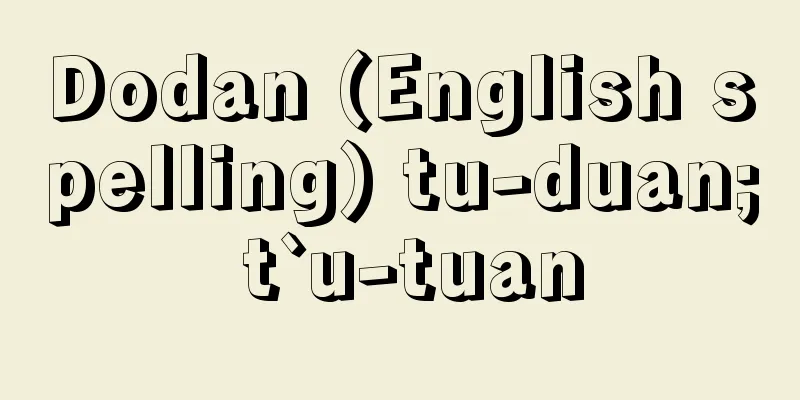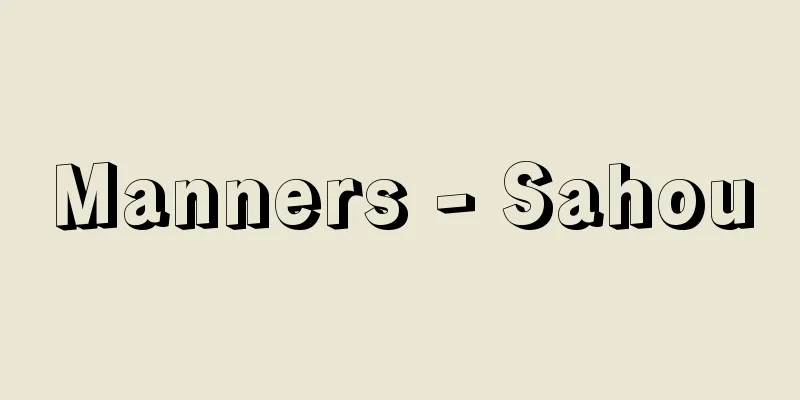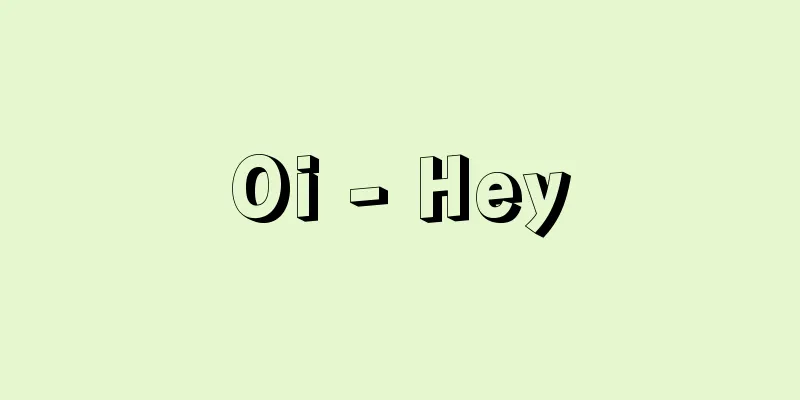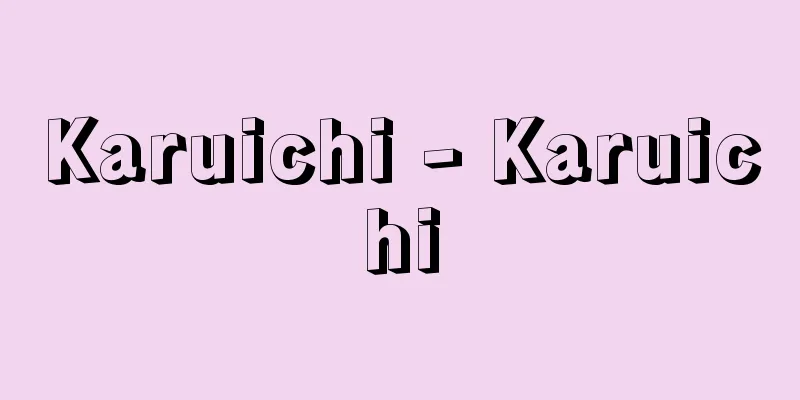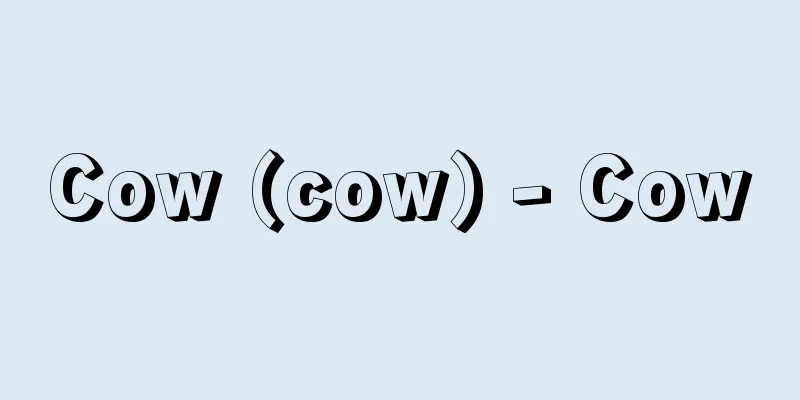Hydrotherapy - Suijiryoho (English spelling)

|
A type of physical therapy that uses water. It is a general term for treatment methods that aim to improve illness or reduce subjective symptoms by using water as is or in various temperatures and forms (ice or gaseous steam) to provide thermal and mechanical stimulation, as well as by utilizing water pressure and buoyancy, or by combining with other physical therapies. It plays an important role in the recovery of various motor function disorders, i.e., rehabilitation treatment. Hydrotherapy can be applied locally or systemically. A poultice (such as a compress) is an example of a local application method, while systemic application methods include regular baths (cleaning baths) and various therapeutic baths, including foot baths and sitz baths. [Kojima Hideo] Therapeutic bathA bath temperature of around 36°C is called the insensible temperature because it does not feel hot or cold, and has minimal impact on the body. Therapeutic baths are divided into cold baths and hot baths (lukewarm, warm, and high temperature baths) according to the bath temperature. Lukewarm baths around the insensible temperature are used for long periods of time, and are used for insomnia and high blood pressure because of their significant sedative effect. One method of cold bathing is cold water friction. Alternating hot and cold baths are very stimulating. Gradual warming baths can be used to minimize blood pressure fluctuations during hot baths. This method involves entering the bath at the insensible temperature, gradually raising the bath temperature, and then lowering it back to the insensible temperature before exiting. In addition, in water, buoyancy reduces the apparent weight, so even people who are unable to support their own bodies due to weakened muscles can stand up and walk in a full-body bath, and the heat also relieves muscle contractures and pain associated with motor paralysis, making exercise easier. Combining a hot bath with exercise like this is also effective for muscle atrophy. Furthermore, the water in the bath can be made to flow like a whirlpool (whirlpool bath), waves can be created (wave bath, shaking bath), bubbles or foam can be produced (air bubble bath), hot water can be sprayed (jet bath, underwater douche), massage-like stimulation can be given to the affected area while bathing, and underwater resistance exercise can be performed. A Hubbard tank, a gourd-shaped full-body bathtub with a narrow center that makes it easy to care for, is ideal for these bathing methods. Other types of baths include irrigation baths, which apply pressure by dropping hot water from a high place; steam baths (also called steam baths); hot air baths, which use dry hot air; ultrasonic baths, which use the properties of ultrasonic waves to propagate through water to enhance the thermal effect; electric baths, which combine hot baths with electrical therapy; and medicinal baths, which contain various medicines in the bath water (also called medicinal baths). Of these, steam baths include steam chamber baths, Russian baths, and Turkish baths, while hot air baths include Roman baths and sauna baths. All of these have a strong thermal effect and a marked sweating effect, and are used for weight loss in obesity, but caution is required for those who are frail or have cardiovascular disease. Electric baths include four-tank baths, in which electrodes are inserted into each of the four baths for both upper and lower limbs and direct current is passed through them, and are used for peripheral vascular disorders and nerve disorders. In addition, swimming in the sea and bathing in hot springs are also considered special forms of hydrotherapy. [Kojima Hideo] [References] | | | | | | | |Source: Shogakukan Encyclopedia Nipponica About Encyclopedia Nipponica Information | Legend |
|
水を利用した物理療法の一種。水をそのまま、あるいは種々の温度や形態(氷やガス状の蒸気)にして温度刺激や機械的刺激を与えるほか、水圧や浮力などを利用したり、他の物理療法を併用することによって疾患の好転や自覚症状の軽減を図る治療法の総称である。各種の運動機能障害の回復、すなわちリハビリテーション治療に大きな役割を果たしている。 水治療法には局所的および全身的な応用法がある。罨法(あんぽう)(湿布など)は局所的応用法で、全身的応用法には普通の沐浴(もくよく)(清拭(せいしき)浴)のほか各種の治療浴があり、部分的なものでは足浴(そくよく)や座浴(ざよく)などがある。 [小嶋碩夫] 治療浴入浴温度が36℃前後では熱くも冷たくも感じないので不感温度といわれ、生体に対する影響が最小である。治療浴では入浴温度によって寒冷浴と温熱浴(微温浴、温浴、高温浴)に分けるが、不感温度前後の微温浴では長時間の持続浴が行われ、鎮静作用が著明なため不眠症や高血圧症などに利用される。寒冷浴の一方法として冷水摩擦があげられる。温冷交代浴は温度刺激が強い。温熱浴時の血圧変動を最小限にするためには漸温浴がある。これは不感温度で入浴して漸次浴温を上昇させ、出る前にふたたび不感温度まで下げる方法である。また水中では、浮力によって見かけ上体重が減ずるので、筋力が減弱して普段は自分の体を支えることが不可能な者でも全身浴中では起立や歩行などの運動ができるし、運動麻痺(まひ)に伴う筋肉の拘縮や痛みも温熱作用で緩解するので運動が容易となる。こうした温浴と運動の併用は、筋萎縮(いしゅく)などにも有効である。さらに、浴槽の水を渦巻のように流動させたり(渦流浴)、波をつくったり(波浪浴、震盪(しんとう)浴)、気泡や泡沫(ほうまつ)を出したり(気泡泡沫浴)、温湯を噴出させたり(噴流浴、水中圧注)、水浴中の患部にマッサージ様の刺激を与えたり水中抵抗運動を行うこともできる。これらの浴法には、中央部がくびれて介護しやすいひょうたん形の全身浴槽ハーバードタンクHubbard tankが適している。 このほか、高所から温水を落下させて水圧を加える灌注(かんちゅう)浴、蒸気を用いる蒸気浴(いわゆる蒸し風呂(ぶろ))や乾燥した熱気を用いる熱気浴、超音波が水中を伝播(でんぱ)する性質を利用して温熱効果を強める超音波浴、温浴に電気療法を併用する電気浴、浴水中に各種の薬剤を入れて入浴する薬浴(いわゆる薬湯(くすりゆ))などがある。これらのうち、蒸気浴には蒸気函(かん)浴、ロシア風呂、トルコ風呂があり、熱気浴にはローマ風呂やサウナ風呂が含まれ、いずれも温熱効果が強くて発汗作用が著しく、肥胖(ひはん)症の体重減少などに用いられるが、虚弱者や心血管系疾患のある者などの利用には注意を要する。また電気浴には、両方の上下肢を入れる四つの部分浴槽にそれぞれ電極を挿入し、直流電気を通電する電気四槽浴が行われ、末梢(まっしょう)性の血管障害性疾患や神経障害などに利用されている。 なお、海水浴や温泉浴も水治療法の特殊なものと考えられる。 [小嶋碩夫] [参照項目] | | | | | | | |出典 小学館 日本大百科全書(ニッポニカ)日本大百科全書(ニッポニカ)について 情報 | 凡例 |
Recommend
Isshinkai - Isshinkai
An organization that developed the movement for t...
Tetraplodon mnioides (Hedw.) BSG
A moss with a unique ecology in the family Plommat...
Fujiyama Aiichiro
Businessman and politician. Born in Tokyo. Eldest...
barāt (English spelling)
…Ruq'a is a credit document in which the issu...
Vicuna (English spelling)
A mammal of the order Artiodactyla and family Cam...
QA - QA
《 quality assurance 》Quality assurance. Source: Ab...
Soto Zen sect
A sect of Zen Buddhism in China and Japan. [Yoshi...
Antonov's Rebellion - Antonovshchina
A large-scale anti-Soviet peasant revolt that took...
print-out
…The process of making a photograph using photogr...
Matthias Erzberger
German politician. A member of the Catholic Cente...
Foreign red stamp book - Ikokugoshuincho
This is a register of red seal letters issued by t...
Philippos
... Content analysis has revealed that the Palati...
Hair removal - Datsumo
〘noun〙① The falling out of hair. Also, hair that h...
Kondratieff cycle
...In the early 1970s, the Central European count...
Micropotamogale lamottei (English spelling) Micropotamogalelamottei
…They give birth to two young per litter. There i...
